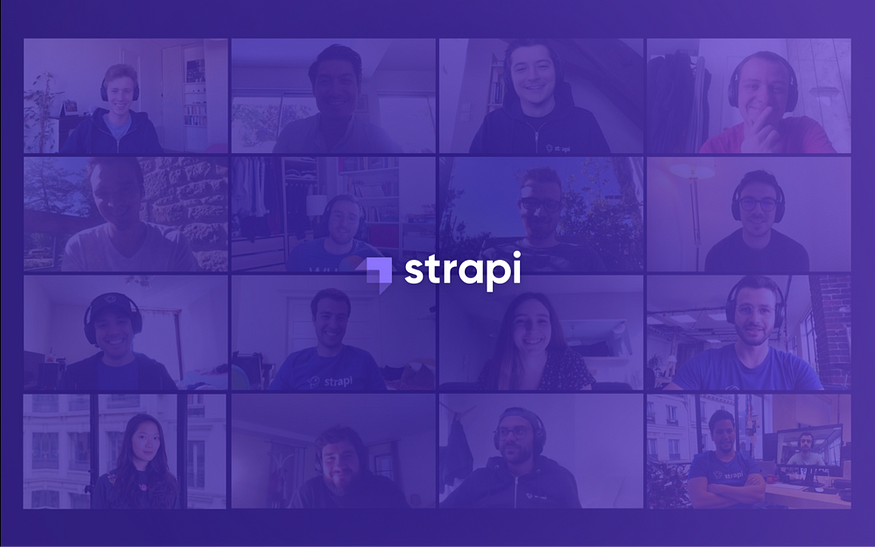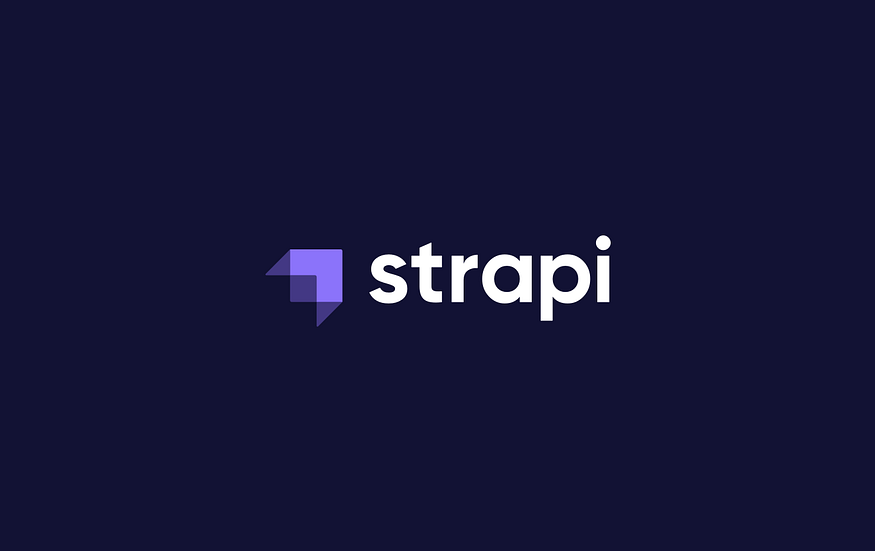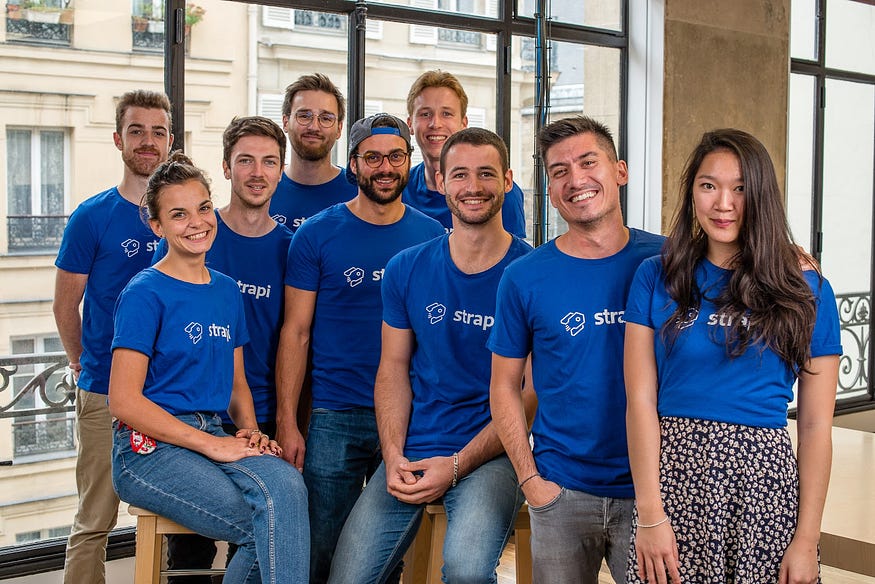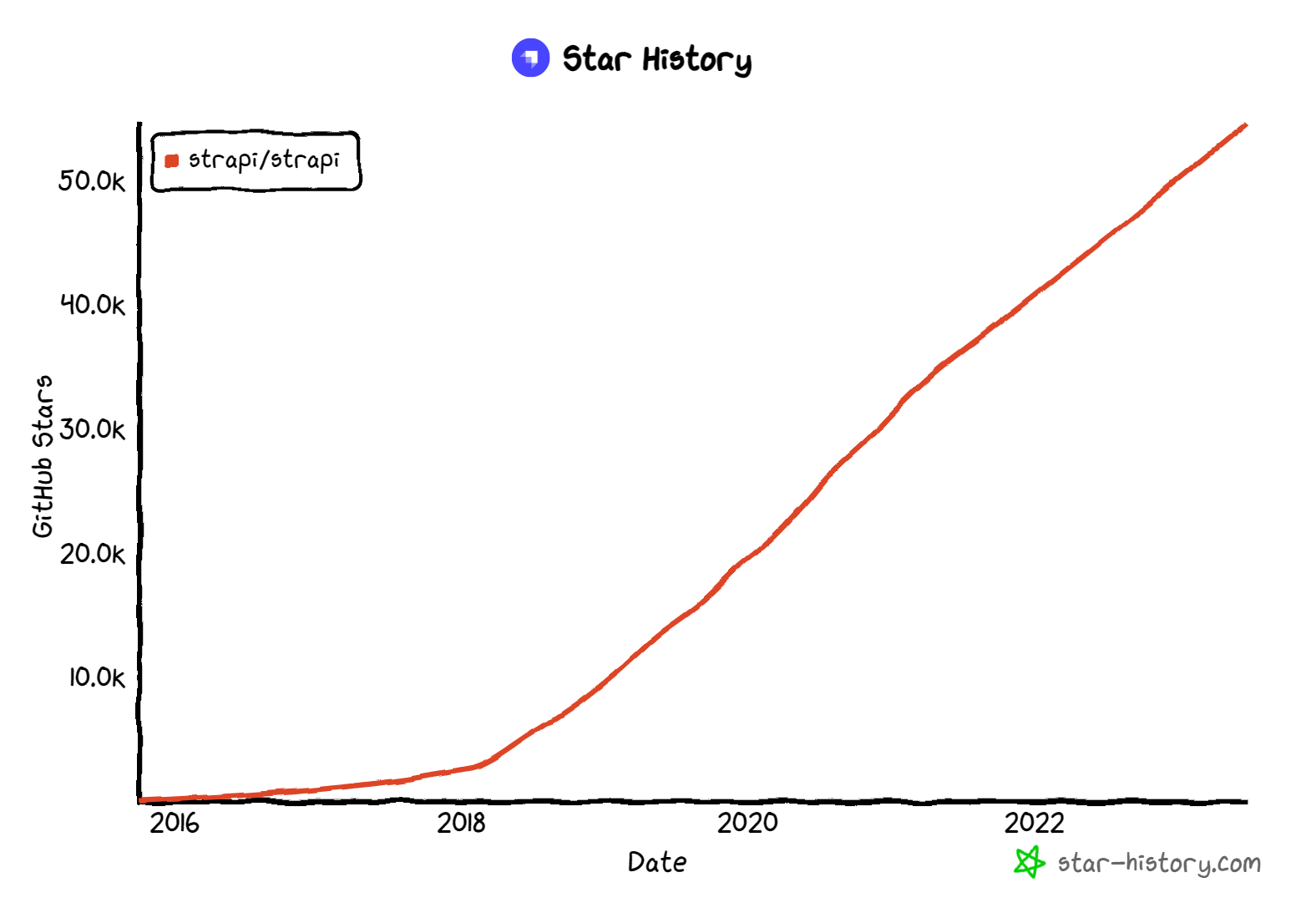The Story of Strapi: A Stellar Open Source Headless CMS
CMS stands for content management system - to create, manage, and deliver content. Strapi is an open source CMS that's smart and effective.

CMS stands for content management system — to create, manage, and deliver content.

Strapi is one of the leading open-source headless content management systems.
In this blog, we’ll uncover not just its features and functionalities but also the story of this brilliant software, its founders, how it started and where it’s headed.
But first, as usual, let’s start with the basics.
What is a CMS?
A content management system helps you create, manage and access content (text, design, graphics, even code) architecture on your website.
Fun Fact: The first CMS was released in 1995.
What is a traditional CMS?
A traditional CMS made more sense, well, traditionally. It’s suitable just for a single touchpoint.
Think of it like a landline phone — limited in functionality.
(Google this if you’re a Gen Z kid ;)
What is a headless CMS?
A headless CMS is a modern-day savior from all the hassle caused by a traditional CMS. It lets you manage your content and deliver it to any channel or device via APIs.
When you separate your content repository “body” from its presentation layer “head,” it becomes a headless CMS. (Source: agilitycms)
What is an API?
An API or Application Programming Interface is something you’ve been using for a long time.
Yes. 100% sure about it.
Right from unlocking your car, booking movie tickets, ordering food, online shopping — all of it (and lots more) happens through APIs.
“An API is the messenger that takes requests and tells a system what you want to do, and then returns the response back to you.”

It’s responsible for all the interactions between applications, data and devices.
TL;DR - It’s an intermediary allowing two applications to talk to each other.
Strapi — A headless CMS that’s leading for all the right reasons 🚀

Strapi allows building self-hosted, customizable, and efficient content API.
It’s low-cost, customizable, and portable — that works with all your favourite dev tools.
With Strapi, you can:
- Effortlessly create content structures
- Seamlessly write, edit and manage content
- Easily build apps and digital experiences (without CMS complexities)
- Deploy on traditional servers or on any cloud platform

As a developer — you get the freedom to use your favourite tools and frameworks.
As a content professional — you get to manage and distribute your content, effortlessly.
The best part… It’s Open Source! 💙
Published under the *MIT license — Strapi is forever open source. The entire codebase is available on GitHub, and maintained by hundreds of contributors.
*MIT: One of the most commonly used OSS licenses.
What are Strapi’s other benefits?
1. Simple: A super intuitive interface that’s easy to use.
2. Fast: Powered by a modern tech stack, installs within 2 minutes.
3. Flexible: Change the content type structure with dozens of field options.
4. Customizable: Installable on your server to meet your custom needs.
5. Self-hosted: Full data privacy, no lock-in. Always control your data & costs.
Finally — The Stellar Story of Strapi.io
The fabulous 5 phases!
Phase 1: The Side Project (2015)

Like many other amazingly successful companies — Strapi’s foundation also stems from a university campus.
The now co-founders Pierre, Jim and Aurélien were students who also worked as freelance developers part-time.

Fun Fact: Aurélien was a developer since he was 13, and had used Wordpress since he was 14 years old!
They were building websites and apps, using Node.js frameworks and traditional CMSs.
Once, while trying to build a mobile application for a client — using a traditional CMS wasn’t working well at all.
After facing similar challenges while working on anything with a modern front-end framework — they started building software to overcome these limitations.

Soon, they realized that others also need a similar solution — and that’s when they published the project on GitHub. This was October 2015.
Making it open-source was a no-brainer. Why?
- They used a LOT of open source software themselves.
- They knew collaboration leads to better software.
- Customization was possible only through source-code access
Initially, it was a mix between a framework for building APIs and a CMS.
Fun fact: The name Strapi comes from Bootstrap your API.
Phase 2: New Beginnings (2016 and 2017)

The 3 enthusiasts continued maintaining their open source project on nights & weekends. During the last year of college, they had to work on a business plan — the perfect opportunity to create an ambitious future for Strapi!
That’s how Strapi SAS (the equivalent of Strapi, Inc. in France) was incorporated.
(Despite not working full-time, they released the MVP in about a year)
“The sooner you release the first version, the better it is.”
— Pierre Burgy, at Catch the Tornado podcast
In 2017, they finally switched full-time and hired the 1st employee.
(Kept getting user feedback over these 2 years)
Around mid 2017, they rebuilt Strapi from scratch. With technical changes, a new UI, re-written documentation, a new plugin system and a brand new website — v3. alpha was released.

“Open source is all about iterating.”
— Pierre Burgy
Phase 3: The Growth (2018)

Honestly, this is my most favourite phase from the entire story…
Raising funds
The user-base began to grow (a lot) and the founders started considering fundraising. But convincing investors about an open-source project was challenging.
After 9 months of facing rejections, they finally closed a $1M pre-seed round!
User Research
The 2 primary use cases Strapi was used for:
1. Building custom APIs
2. Managing content
This kept the team conflicted about what to focus on... Especially because the split was 50–50.

As a solution to this dilemma, they decided to create a fake pricing page.
The results: More users were willing to pay for content management-oriented features.
That was it — Strapi was a headless CMS from there on.

Phase 4: The Exponential Growth (2019)
As an ideal next step, YCombinator Application — check ✅
But there’s a twist.
They cancelled the application 1 day before the interview!

But WHY would they do that?
Here’s your closure ↓
The team also started a fundraising roadshow around the same time of the YC application, and ended up raising $4 million within just a month!
The reason to wait till the last day you ask?
They had to make sure they close the round :)
They also introduced new features to make the CMS super flexible.
Phase 5: The Transformation (2020 and beyond)

Just 6 months after closing the $4 million round in seed funding, Strapi raised $10 million in Series A funding by Index Ventures.
In May 2020, the company announced becoming an industry standard as the de facto Headless CMS.

5 years after its first commit, here’s a few stats proving Strapi’s success back then:
- 1 million downloads on npm
- 25,000+ stars on GitHub
- 400+ contributors — 95 percent outside of the core Strapi team
- 13,000+ commits
- 4,000+ Strapi related projects on GitHub
Strapi covered small businesses, Fortune 500 companies, IBM and NASA, too!
After COVID-19 hit, the team took the opportunity to become a worldwide remote-first team.

What else changed?
Launched the stable version ✅
Released new branding ✅
Announced the Enterprise edition ✅
Oh yes, the team also crossed 25 members! 🚀

Wow. How inspiring is this story. Isn’t the blog’s title super justified?
What makes Strapi stand out?
Being open source with strong core values.
🎯 Purpose: A world where technology unleashes content creativity and productivity for all.
🎯 Mission: To empower millions of people to share and manage any content, anywhere.

The 3 co-founders — Pierre Burgy (CEO), Aurélien Georget (CPO), and Jim Laurie (CTO) are not just passionate about technology, but also strongly believe in the power of open source software.
“Open Source definitely deserves the same involvement as SaaS products.”
— Pierre Burgy
Strapi crossed 50k stars on GitHub in November 2022! ⭐


Find Strapi — Everything you need to build and scale a powerful, optimized tailor-made application ↓
🔗 Website
🐱 GitHub
💙 Twitter
💻 Careers
❓ Forum
Check out Strapi Cloud here.
That’s it for today. Stay tuned for more! ✨
Like every other early-stage startup, we love feedback! Share yours in the comments section below.
Follow Scoutflo on Twitter, Medium, Linkedin and Hashnode to find everything amazing about the world of open source software! 💙
Psst… Twitter is our favourite :)

